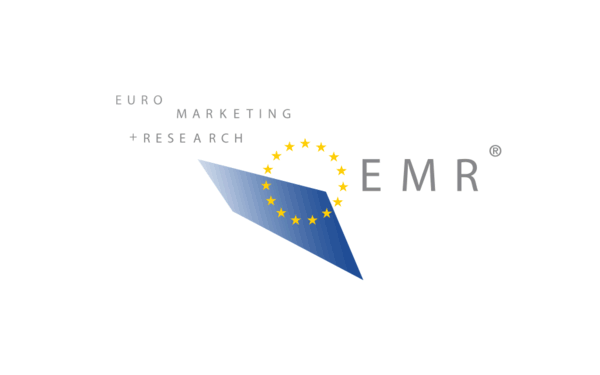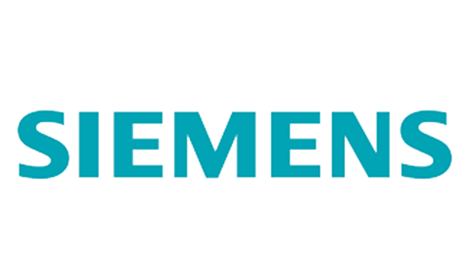Siemens – Siemens to strengthen competitiveness in automation business and in electric vehicle charging business
- Automation business: focus on growth markets and stronger customer orientation
- Electric vehicle charging business: concentration on fast-charging infrastructure for depots and fleets and for en-route charging
- Capacity adjustments worldwide and in Germany necessary at both businesses
- Planned measures in automation business to affect around 5,600 jobs worldwide, including about 2,600 in Germany; around 450 jobs worldwide to be affected in electric vehicle charging business, including about 250 in Germany
- No operational-related redundancies in Germany
- Continued strong commitment to Germany as a business location
Siemens has presented plans to further increase its global competitiveness to employee representatives. The plans affect units in the automation business at Digital Industries and the electric vehicle charging business at Smart Infrastructure. Changed conditions in key markets have made capacity adjustments necessary in both cases. For two years, the German market, in particular, has been declining. As a result, capacities in Germany will have to be adjusted. Operational-related layoffs in Germany are ruled out. The aim is to strengthen the future competitiveness of the businesses affected and enable investments in growth markets. Despite the planned adjustments, Siemens’ total headcount in Germany will tend to remain stable due to hiring in other, growing areas.
Since the start of fiscal 2023, muted demand primarily in the key markets of China and Germany coupled with increased competitive pressures have considerably reduced orders and revenue in the industrial automation business. Global demand for automation technology is intact over the long term. However, the shift of growth away from current key markets such as Germany has made a structural adjustment of capacities necessary. Further measures to strengthen competitiveness of the automation business of Digital Industries include a realignment of sales activities, cross-unit collaboration in product development and a more flexible steering of the organization’s global factory network.
Siemens already announced the planned capacity adjustments at its automation business at its Annual Press Conference in November 2024. Digital Industries employs about 68,000 people worldwide. The planned reduction will affect about 5,600 jobs globally. A reduction of around 2,600 jobs is planned for Digital Industries in Germany. The related measures are to be implemented by the end of fiscal 2027.
In September 2024, Siemens also announced its intention to carve out its electric vehicle charging business in order to better leverage opportunities in the dynamic market for charging infrastructure. The market is currently characterized by strong price pressures and limited growth potential for low-power charging stations. For this reason, the business is focusing on market segments such as fast-charging infrastructure for depots and fleets and for en-route charging. In addition, the intention is to establish a more regional approach for markets with sometimes different charging standards to be able to serve the markets faster and in a more targeted manner. Worldwide, Siemens currently employs more than 1,300 people at its electric vehicle charging business. A total of around 450 jobs will be affected by the planned adjustment, including about 250 in Germany. The planned measures are to be implemented by the end of fiscal 2025.
A total of around 86,000 people currently work at Siemens in Germany. As far as possible, the people affected are to be offered opportunities for re- and upskilling. Job placement inside the company will also play a key role in implementing the measures. There are currently more than 7,000 open positions at Siemens, of which about 2,000 are in Germany alone. People employed at Siemens’ locations in Germany will also retire for age reasons.
Siemens remains strongly committed to Germany as a business location. Of the €2 billion in global investments that the company announced in 2023 to strengthen growth, innovation and resilience, about €1 billion is earmarked for Germany. This figure includes €500 million for Siemens’ new campus for research and high-tech manufacturing in Erlangen, Germany, where the company is establishing a global center for development and manufacturing and a springboard for technology-related activities to drive the industrial metaverse.
SourceSiemens
EMR Analysis
More information on Siemens AG: See full profile on EMR Executive Services
More information on Dr. Roland Busch (President and Chief Executive Officer, Siemens AG): See full profile on EMR Executive Services
More information on Ralf P. Thomas (Member of the Managing Board and Chief Financial Officer, Siemens AG): See full profile on EMR Executive Services
More information on Siemens Digital Industries (DI) by Siemens AG: See full profile on EMR Executive Services + https://new.siemens.com/global/en/company/about/businesses/digital-industries.html + Siemens Digital Industries (DI) empowers companies of all sizes within the process and discrete manufacturing industries to accelerate their digital and sustainability transformation across the entire value chain. Siemens’ cutting-edge automation and software portfolio revolutionizes the design, realization and optimization of products and production. And with Siemens Xcelerator – the open digital business platform – this process is made even easier, faster, and scalable. Together with our partners and ecosystem, Siemens Digital Industries enables customers to become a sustainable Digital Enterprise. Siemens Digital Industries has a workforce of around 68,000 people worldwide.
More information on Cedrik Neike (Member of the Managing Board and Chief Executive Officer, Siemens Digital Industries (DI), Siemens AG): See full profile on EMR Executive Services
More information on Siemens eMobility Solutions: https://new.siemens.com/global/en/products/energy/medium-voltage/solutions/emobility.html + Together with visionary customers, we make eMobility a reality – today and for tomorrow.
Electromobility is the norm. To make it a reality, we are cooperating with OEMs, utilities, fleet operators, companies, cities and end customers alike. Our contribution is not just products, but complete solutions for electromobility that combine many years of know-how, innovative software and high-performance products.
More information on Markus Mildner (Chief Executive Officer eMobility, Siemens Smart Infrastructure, Siemens): See the full profile on EMR Executive Services
More information on Siemens Smart Infrastructure (SI) by Siemens AG: https://new.siemens.com/global/en/company/about/businesses/smart-infrastructure.html + Siemens Smart Infrastructure (SI) is shaping the market for intelligent, adaptive infrastructure for today and the future. It addresses the pressing challenges of urbanization and climate change by connecting energy systems, buildings, and industries. SI provides customers with a comprehensive end-to-end portfolio from a single source – with products, systems, solutions, and services from the point of power generation all the way to consumption. With an increasingly digitalized ecosystem, it helps customers thrive and communities progress while contributing toward protecting the planet. Siemens Smart Infrastructure has its global headquarters in Zug, Switzerland. As of September 30, 2024, the business had around 78,500 employees worldwide.
More information on Matthias Rebellius (Member of the Managing Board and Chief Executive Officer, Siemens Smart Infrastructure (SI), Siemens AG + Member of the Supervisory Board, Siemens Energy AG): See the full profile on EMR Executive Services
EMR Additional Notes:
- Metaverse:
- The first use of the term ‘metaverse’ was in the 1992 science fiction novel “Snow Crash”, by Neal Stephenson, which described a single virtual world separate from the physical world.
- In the broadest terms, the metaverse is understood as a graphically rich virtual space, with some degree of verisimilitude, where people can work, play, shop, socialize — in short, do the things humans like to do together in real life (or, perhaps more to the point, on the internet).
- The technologies companies refer to when they talk about “the metaverse” can include virtual reality—characterized by persistent virtual worlds that continue to exist even when you’re not playing—as well as augmented reality that combines aspects of the digital and physical worlds.
- Basically, a place parallel to the physical world, where you spend your digital life. A place where you and other people have an avatar, and you interact with them through their avatars.
- The Metaverse represents a highly interactive three-dimensional virtual world. Like the real world, users can trade land, buildings, and other digital assets in the Metaverse and explore the space using their personalized avatars.
- Examples: Hyundai Motor Company debuted Hyundai Mobility Adventure, a metaverse experience on gaming platform Roblox. Gamers’ avatars can experience Hyundai future mobility projects and current products. And last year, Warner Bros. Pictures hosted a virtual party on Roblox to market its movie In the Heights.
- Bloomberg Intelligence tells us that the value of the metaverse is expected to reach $800 billion by the middle 2020s with that figure climbing to $2.5 trillion by 2030.
- Following Meta, the metaverse is the next evolution in social connection and the successor to the mobile Internet.
- Industrial Metaverse:
- The industrial metaverse is a network of digital twins that links physical assets and the digital world. It enables manufacturers to connect their digital twins with their customers and suppliers so they can work together and get insights based on real time data.
- On one side, we have Industry 4.0 (Industrial IoT or IIoT) which has been gathering data from equipment and environments for many years. This data is increasingly stored in the cloud and accessed through an off-the-shelf IoT provider, such as Amazon’s AWS or Microsoft’s Azure. On the other side, we have the 3D world of gaming technology, augmented/virtual/mixed realities, and CAD. Combining the two leads to an immersive environment where IoT data can be accessed in new and innovative ways.
- Digital worlds based on real-time data will allow corporations to have multiple iterations and simulations of themselves. Lessons learned and breakthroughs discovered in the Industrial Metaverse will provide feedback into reality, enabling companies to change real-world parameters to optimise everything!
- The Industrial Metaverse is “basically” a Digital Twin
- Simulations in a metaverse environment could allow manufacturers to test thousands of potential scenarios for their ecosystems to explore different strategies.


